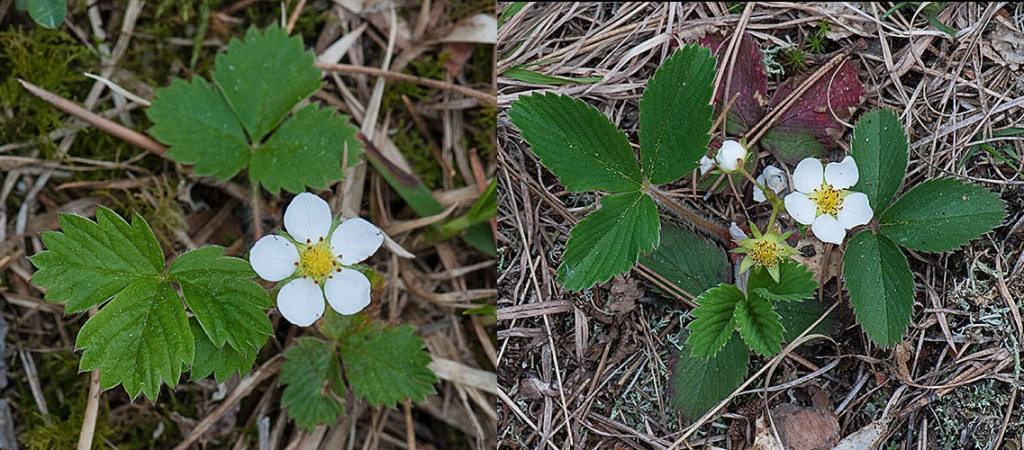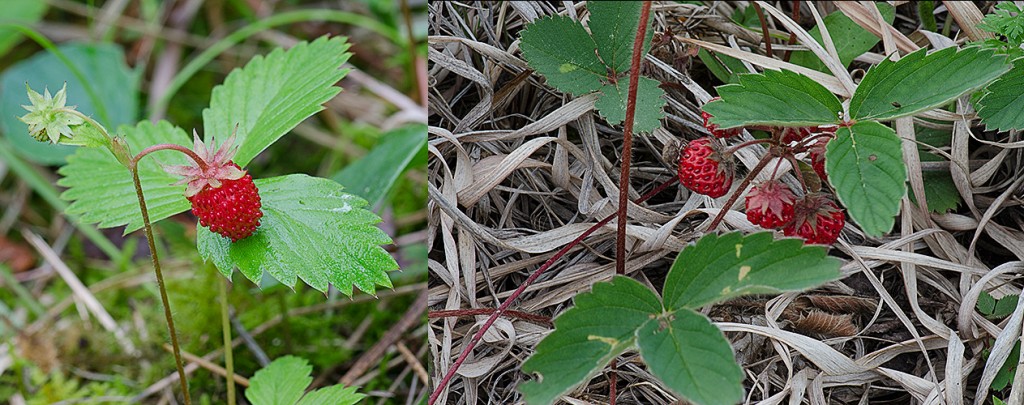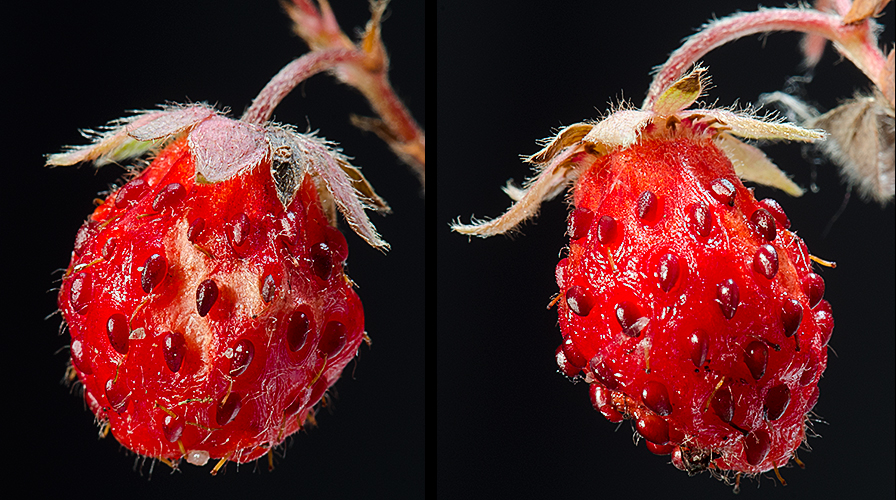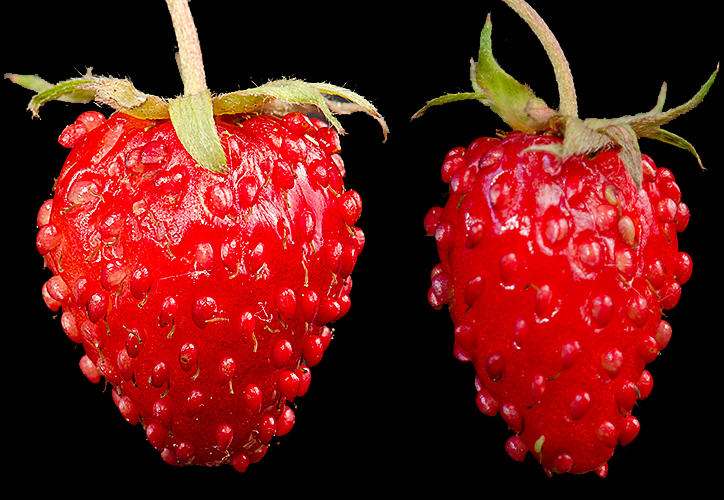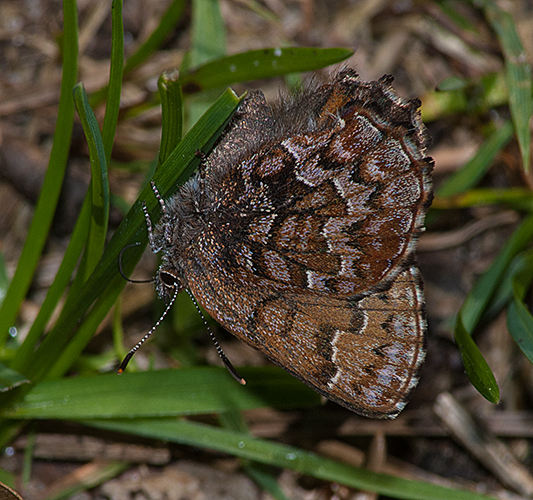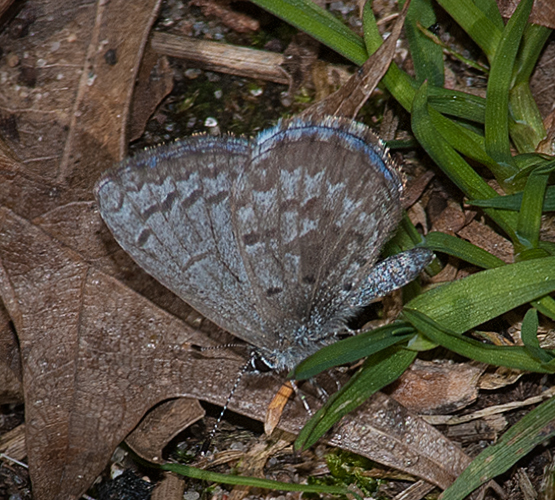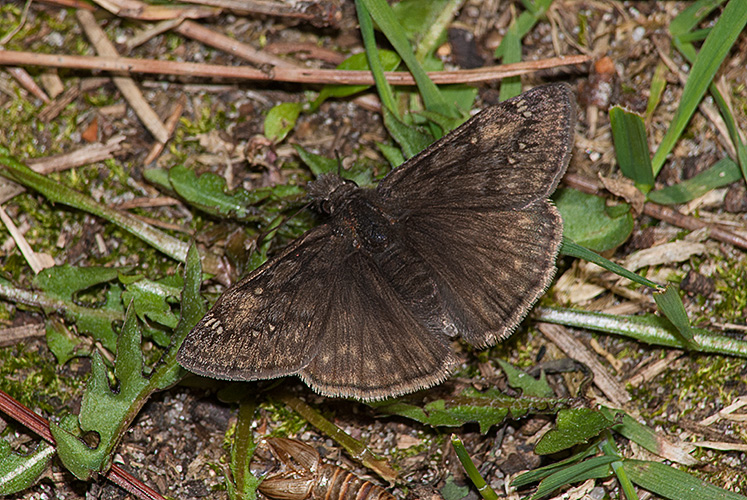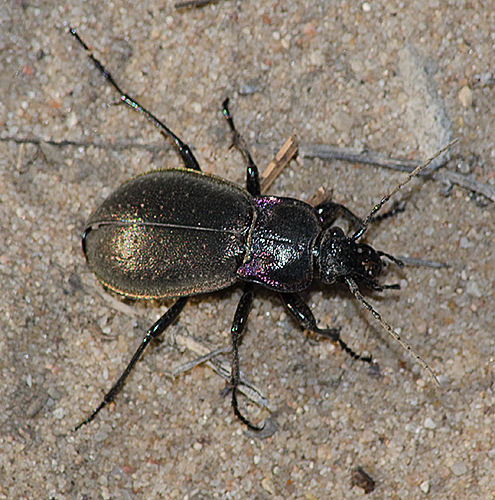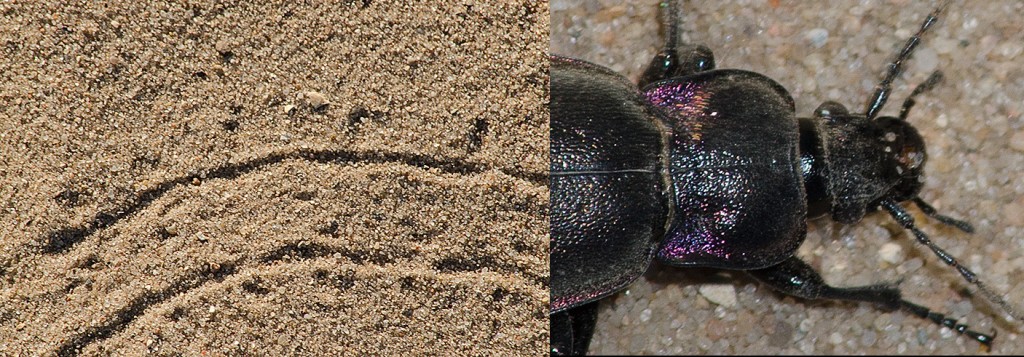Michigan has two species of native Strawberries. The Wild Strawberry (Fragaria virginiana) and Woodland Strawberry (F. vesca). If you have never eaten a native Strawberry you simply have not experienced life. The fruit is about 6mm (1/4 inch) long and all the flavor of a large commercial Strawberry is packed into its small size. I found a handful of each species last weekend near Grayling. Michigan. Wild Strawberries are sweeter and juicer than the Woodland Strawberry but I will eat both.
The two species normally are easy to tell apart. Wild Strawberries have more or less spherical fruit. The strawberry fruit is called a fruiting receptacle and this species’ seeds are on the surface of the fruit in tiny depressions. Fruiting Wild Strawberries have their fruit held beneath the leaves. The terminal tooth on the bluish-green leaflets is smaller than the adjoining teeth.
Woodland Strawberries have elongate fruit and its seeds stick-out from the surface of the fruit. Their fruit is held above the leaves. The terminal tooth on the bright green leaflets is the same size as the adjoining teeth.
Wild Strawberries grow in many habitats. When they are found in old orchards or under Wild Black Cherry (Prunus serotina) trees, Grape Ferns (Botrychium spp.) often grow with them. Wild Strawberries tend to be semi-evergreen. Sometimes they still possess last year’s leaves when the plants flower in the spring.
Get out and look for strawberries along the edges of abandoned farm fields. They are ripe now and worth the time it takes to find, pick, and eat them.
Copyright 2014 by Donald Drife
Webpage Michigan Nature Guy
Follow MichiganNatureGuy on Facebook

